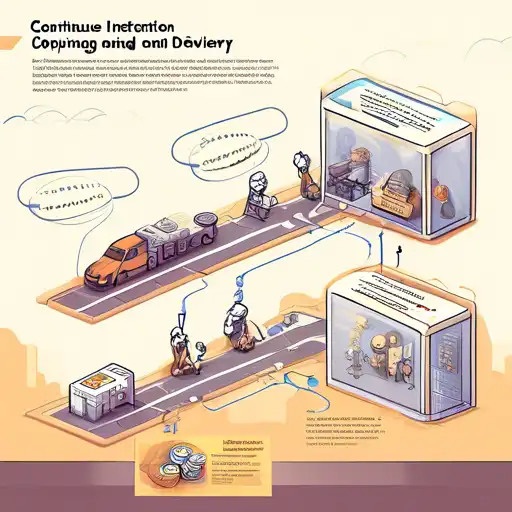What is Continuous Integration and Delivery?
Continuous Integration (CI) and Continuous Delivery (CD) are fundamental practices in modern software development, aimed at improving the speed and quality of software releases. CI/CD automates the integration of code changes from multiple contributors into a single software project, ensuring that the software can be reliably released at any time.
The Benefits of CI/CD
Implementing CI/CD brings numerous benefits to development teams, including:
- Reduced integration problems
- Faster release cycles
- Higher quality software
- Improved team productivity
By automating the build, test, and deployment processes, teams can focus more on developing features and less on the mechanics of software delivery.
How CI/CD Works
CI/CD pipelines are the backbone of these practices. A typical pipeline includes the following stages:
- Code commit: Developers push changes to a shared repository.
- Build: The system compiles the code into executable artifacts.
- Test: Automated tests verify the functionality and performance of the code.
- Deploy: The system deploys the code to production or staging environments.
This automation ensures that every change is tested and ready for release, minimizing the risk of errors in production.
Best Practices for CI/CD
To maximize the effectiveness of CI/CD, teams should adhere to the following best practices:
- Maintain a single source repository
- Automate the build process
- Make the build self-testing
- Keep the build fast
- Test in a clone of the production environment
Following these practices helps ensure that the CI/CD pipeline is efficient and reliable.
Challenges in Implementing CI/CD
While CI/CD offers many advantages, teams may face challenges such as:
- Cultural resistance to change
- Integration with legacy systems
- Managing test environments
Overcoming these challenges requires commitment from the entire team and a willingness to adapt processes and tools.
Conclusion
Continuous Integration and Delivery are transformative practices that enable teams to deliver high-quality software rapidly and reliably. By automating the software delivery process, teams can reduce errors, improve efficiency, and respond more quickly to customer needs. For more insights into DevOps practices, explore our latest trends in DevOps.
